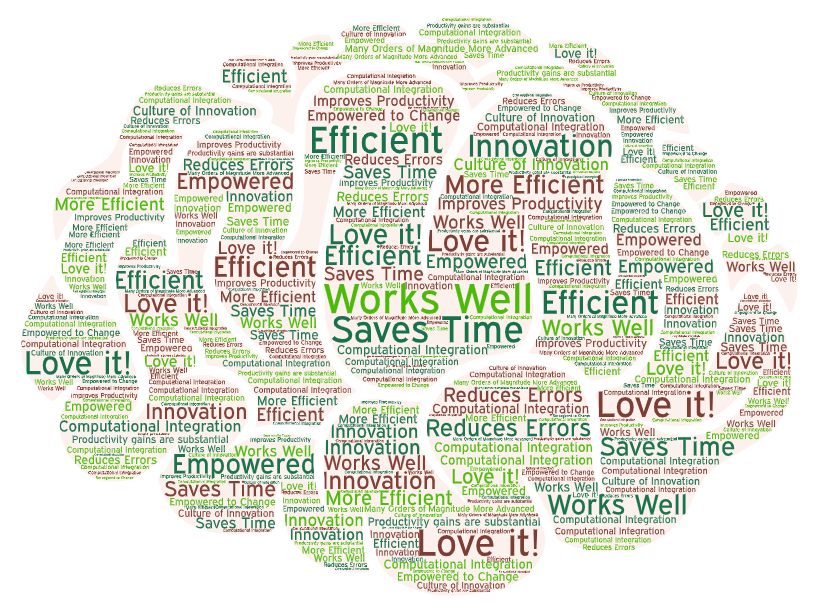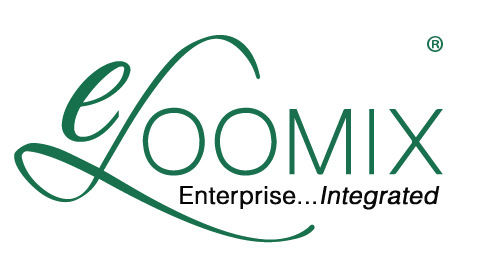Services
Computational Integration
One-size-fits-all systems often fall well short of what technology might ultimately do for knowledge-driven, data-intensive work. While conventional monolithic enterprise systems provide some of the functionality necessary for work, generally people must also bridge the gap between what these systems can do and what must be done. In some domains our experience reveals this effort to accommodate monolithic technology amounts to 25% of bottom-line labor cost. Computational Integration is a technology for engineering better work by rightsizing the employee’s cognitive workload through automation of their manual processes - tuning the balance of work between people and technology.
In keeping with this perspective, we make the following assumptions in deploying Computational Integration:
- Your employees are the ultimate authority on what their technology should do.
- Your employees are experts in their work. They know the processes, and they also know how the processes could be improved.
- There's often a gap between the improvements your employees would like to make and their ability to bring those improvements to fruition.
- The energy, creativity, and problem-solving abilities of your employees are being suppressed due to this lack of control in how their work is accomplished.
Computational Integration gives your organization the ability to capture and monetize this wasted human potential.
Assessment and Champion Identification
We will work with your organization's leadership to identify the pain points:
- Where there is expressed frustration with existing systems,
- Where coordination is difficult and time-consuming,
- Where obtaining operational intelligence is difficult and time-consuming,
- Where you have frustrated employees, who know it could be better if only technology were a willing and flexible partner.
- Where staff is inspired to innovate but otherwise hamstrung by inflexible monolithic technology.
We will ask leadership to identify potential champions within your organization, people who are experts in their work, inspired to innovate, and are willing and available to partner with us as we formalize their processes as application code.
Codebase (Platform + Microservices) Development
The Computational Integration (CI) codebase has two components: a platform of basis functions and a suite of microservice applications that utilize these functions. The platform of basis functions is analogous to a dictionary of words. The suite of microservice applications is analogous to sentences comprised of those words.
We will work with your identified champions to understand their processes and to offload their tedious, burdensome and cognitively demanding manual work into microservice applications that perform these tasks for them. This renders their mission-critical knowledge into a computable resource available to the enterprise - anyone, anytime, for new purposes that can be served. The platform of basis functions grows as we build out microservices and, as the platform matures, microservice applications can be constructed with increasing pace and range of functionality.
Measurement
We don't just say we increase worker productivity. We prove it. We want our work to be as measured and results driven as possible and, because we capture your processes so thoroughly, we are also able to capture the benefits of process automatization. At a minimum, we like to capture the amount of time it takes for a worker to complete a task before and after Computational Integration, but we also try to capture things that are harder to quantify in dollars, such as avoided mistakes or averted bad outcomes. Our delivery will include microservices that track and calculate the benefits of the software we construct.
Optimization and Build-out
The CI implementation includes microservices that "mind the store" to ensure that the underlying IT systems are available and running as expected and that everything is being logged and audited as required. When changes to the underlying systems are detected, we will adjust the CI platform to accommodate these changes.
We expect most of the work to be in the expansion and optimization of the CI platform. Once the rest of your organization sees the vastly increased productivity of their champion colleagues, they will want to join the computational integration bandwagon as well. In addition, as your employees learn, they will want to optimize their microservices. Optimization is innovation. The CI platform is demonstrating its value as a catalyst for innovation and empowerment when employees take the driver's seat and begin requesting new and improved functionality.
Benefits of Computational Integration
- Productivity is dramatically improved with reduction in keyboard times by 25 to 50%, releasing human potential for problem solving and innovation.
- Regulatory Compliance is enhanced both through reduction in human error and by enabling increased and more reliable and accurate means of tracking compliance.
- Service Levels improve as variation and irregularity are reduced in computationally-integrated workflows.
- Organizational Resilience is enhanced with the greater pace and flexibility of CI-driven development and the capture of more human expertise by computationally-integrated architectures.
- Innovation accelerates as more people have more time to participate in the development and perfection of work systems.
- The initial financial returns on investment increase dramatically as more microservices are deployed to reduce the costs of data collection and to enable more efficient utilization of existing resources by greater numbers of people within the organization.
What people are saying...

